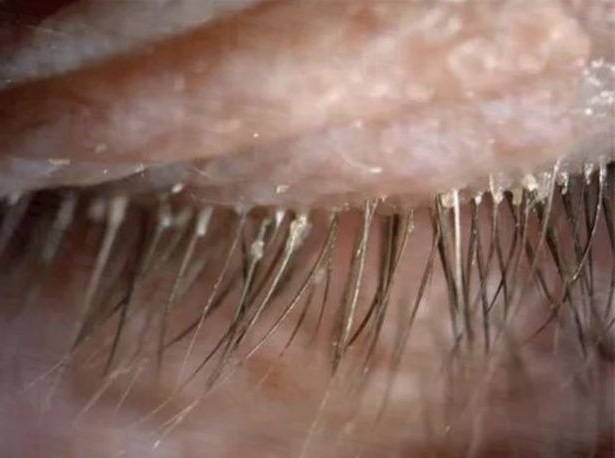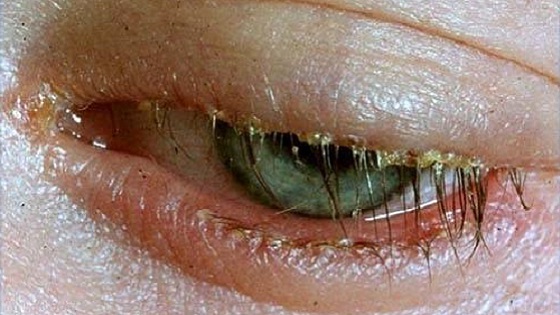It is important to be aware of potential risks and complications associated with eyelash extensions, including lash lice. In this article, we will discuss what lash lice are, how they differ from other types of mites and lice, if eyelash extensions can cause lash lice, and what treatments you should use if you do have them. We will also include pictures to help illustrate these topics.
What Are Lash Lice?
Lash lice (also known as pediculosis ciliaris) are tiny insects that live on the surface of the skin around your eyelashes and eyebrows. They feed on dead skin cells and sebum which is a natural oil secreted by the skin glands. The most common type of lash lice is called pubic lice or “crabs” because they resemble small crabs under magnification. These parasites measure between 1-2mm in size and can only be seen with a magnifying glass or microscope. They tend to attach themselves firmly onto individual hairs near the base where they lay eggs which hatch into nymphs after about 7 days before reaching maturity within 2 weeks time.
Eyelash Lice vs Mites
It is important to note that there are three types of human parasites: head lice (pediculus humanus capitis), pubic/body lice (pediculus humanus corporis), and eyelash mites (demodex follicularum). While all three types live on humans, each one has different characteristics that make them unique from one another:
- Head Louse – This type lives mainly in the scalp but can spread easily via shared clothing items such as hats or hairbrushes; it feeds on blood several times per day causing itching sensations along with white flakes found in the scalp area; they typically measure 3-4mm long
- Pubic/Body Louse – This type feeds exclusively off of blood located at body parts such as armpits or groin areas; symptoms include intense itching along with red bumps located near infested areas; these parasites usually measure 1-3mm long
- Eyelash Mite – Also known as demodex follicularum, this species typically resides inside pores around eye area while feeding off sebum oil produced by glands located around those same areas; due to their small size measuring 0.1-0.4mm long it’s difficult for humans to detect without using specialized instruments like microscopes or magnifying glasses
Can Eyelash Extensions Cause Lash Lice?
Although not commonly discussed among beauty professionals when discussing eyelash extensions, there is still some risk associated with having them applied too often or improperly maintained afterwards. This could potentially lead to an outbreak of lash lice, although very rare cases have been reported over time. Since more people are becoming aware of how dangerous lashes can be if not taken care of properly, especially when applying false ones like synthetic fibers, it is still best practice for both beauticians and clients to maintain cleanliness standards when dealing with any kind of artificial eye enhancement. This is to avoid any possible issues down the road, so always double-check the products being used and make sure the environment remains sterile during the process itself, regardless of whether it’s a home or salon setting.
How To Get Rid Of Eyelash Lices?
If you suspect you may have lash lice, it’s recommended that you visit an eye doctor who specializes in treating such conditions immediately for proper diagnosis, confirmation, and a treatment plan. Depending on the severity of the case, certain prescription medications or topical creams might need to be prescribed depending on the situation. However, certain home remedies have been proven effective as alternative solutions for those who don’t want to take the medicine route. For example, tea tree oil is widely believed to be a natural remedy for killing pests while simultaneously helping to alleviate itching and discomfort experienced as a result of the infestation itself. Though remember to always double-check labels and read ingredients before applying anything directly to the face to ensure safe usage. Additionally, simple hygiene practices like washing hands regularly, avoiding contact with others who are infected, and brushing teeth twice daily are also highly encouraged to prevent the reoccurrence of issues, since the parasite spreads easily through person-to-person contact. Sharing objects should be avoided, and wash towels and sheets regularly to keep the environment clean and free from any potential infections spreading outwards.
Lash Lices In Pictures
To give a better visual understanding, here are a few images that depict the condition once it has already developed in both adult and nymph stages:



See our other eyelash topics:

